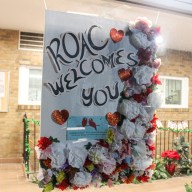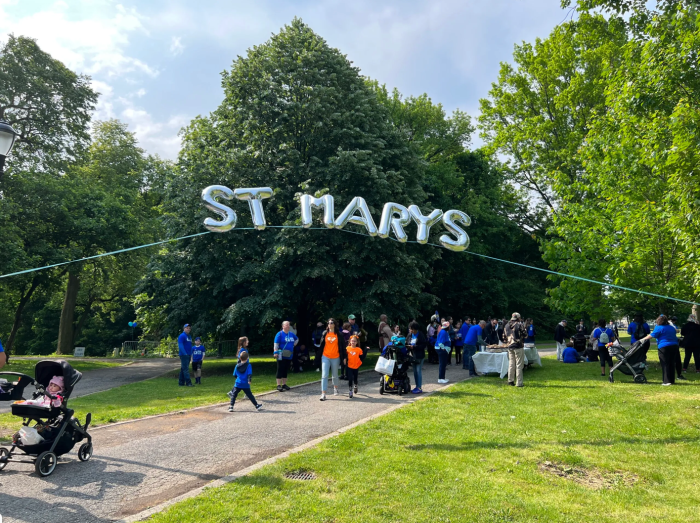By Sophia Chang
The handful who stayed until the end of the four-hour meeting witnessed the board wrangling over the technicalities of the proposal to tighten building regulations in Bayside, presented by the Department of City Planning's Queens director, John Young. After listening to more than 20 residents, architects and homeowners speak on the merits of the plan to rezone 350 blocks of Bayside, the board voted 24-7-2 in favor of accepting the city's rezoning map with amendments. It then took a second vote 24-8-1 in conditional approval of a controversial new zoning designation, called R2A, which severely curtails exemptions that developers may use to build oversized homes.”I think this is an incredibly important, monumental thing,” said Board Chairman Jerry Iannece at the start of the public hearing, held at MS 158 at 46-35 Oceania St. “This is so that future developments more closely reflect the nature of the housing already on the ground,” Young said.With the board's approval came several conditions, including the elimination of a R1-2 designation for roughly 300 homes in northeast Bayside that would have increased minimum lot width, a move that some residents said would make many existing area homes on smaller lots virtually illegal. In addition, members approved R2A only on the grounds that homes be permitted higher exterior walls up to 23 feet to allow for better interior designs, provisions be made for gable roofs, and that further dialogue and fine-tuning continue with the Queens chapter of the American Institute of Architects and the community.The CB 11 vote caps off more than four months of intense community debate over the two-pronged rezoning proposal, which downzones much of the area for lower density housing and also completely rezones the single-family detached housing areas from R2 to R2A, a designation created specifically for Bayside with the strictest building regulations in the city. It is the largest rezoning sweep in the borough, launched by City Councilman Tony Avella (D-Bayside) and based on local urban planner Paul Graziano's research.But critics said the original rezoning proposal, certified Nov. 1 under the city's mandated Uniform Land Use Review Procedure, did not do enough to restrict current exemptions that some say developers exploit to build oversized and out-of-context homes, called McMansions. Some contended City Planning's R2A proposal would actually allow for more McMansions to be built. CB 11's zoning committee had voted against the original proposal Nov. 17, and many civic associations publicly decried the plan, in particular slamming City Planning on what they called the lack of community and professional input. With the Jan. 3 public review deadline looming, City Planning announced Dec. 20 a revision of the plan with further restrictions, including recommendations from residents and architects.One notable speaker was Bayside resident Brixton Doyle, who had been one of the most outspoken critics of the original rezoning plan but was the first Monday night to voice his support. “We should adopt it as soon as possible,” Doyle said, calling for a streamlined process for other neighborhoods to apply for R2A designation as well.Several architects denounced R2A as antithetical to good design and ineffective against the demolition of older homes.”It does not address the destruction of existing homes,” said architect Mike Cosentino. He cautioned residents that these restrictions would also constrain their own home expansion plans. “Don't let change for the sake of change destroy what you might want to do in the future,” Cosentino said. “Don't hopefully go into something and say 'we hate this, we hate that,' without realizing that you might be jeopardizing your future.”R2A is being considered for other neighborhoods that Avella represents like Whitestone and College Point, and zoning experts say Forest Hills, north Flushing, and Laurelton are also being eyed for downzoning. The new zoning could be law within five months, Young said. Pursuant to the board's approval, the rezoning proposal now moves to Borough President Helen Marshall, who has 30 days to review the plan. Bayside resident David Feingersch, who lives on 209th Street and stayed through the entire meeting, said he came to oppose lot subdivisions and unjustified demolition of older homes. But, he noted, the discussion did little to clarify the city's byzantium zoning regulations for him.”I'm confused,” he said of the possible R2A rezoning of his neighborhood. “My biggest problem is knocking down homes and subdivisions. But now I'm not sure if I can really ever expand my own house.”Reach reporter Sophia Chang by e-mail at news@timesledger.com, or by phone at 718-229-0300, Ext. 146.





























